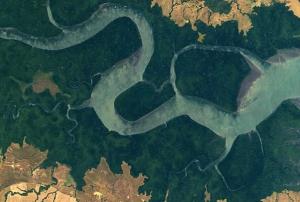A tsunami is a series of travelling waves of extremely long length and period, generated when a large volume of ocean water is rapidly displaced by a sudden displacement of the seabed. These series of waves are generated by a displacement of massive amounts of water through underwater earthquakes, volcanic eruptions or landslides. Tsunami waves travel at very high speed across the ocean but as they begin to reach shallow water they slow down and the wave grows steeper (IRDR Glossary).
The majority of tsunami are generated by shallow large earthquakes in subduction zones. Tsunami is also known as seismic sea waves because it is most often generated by earthquakes (UNESCO).




